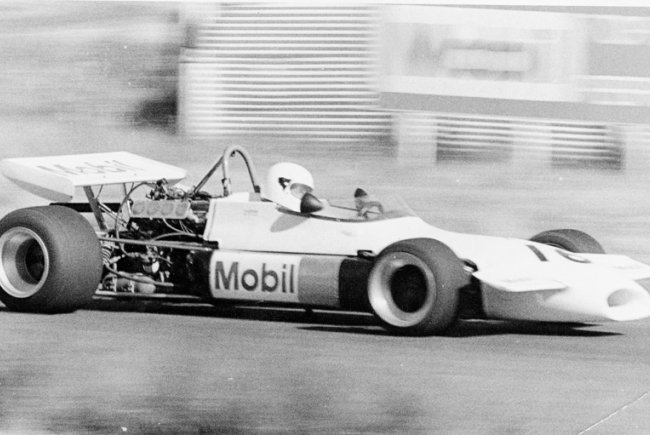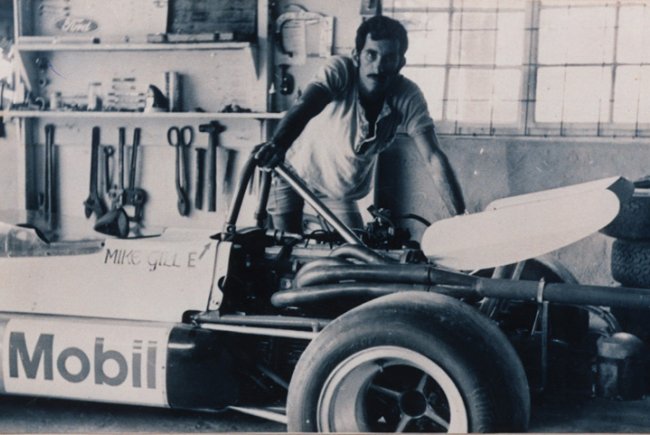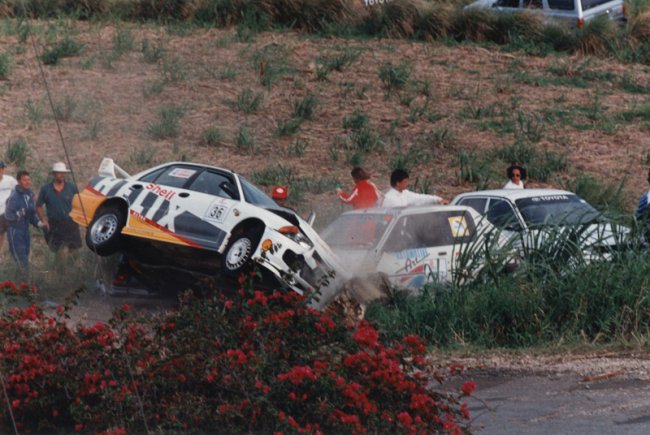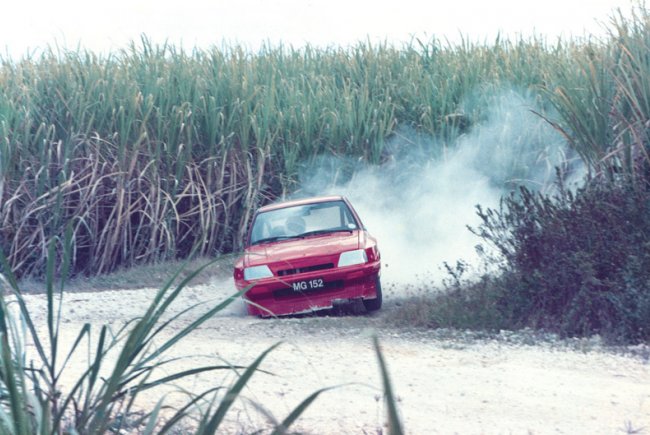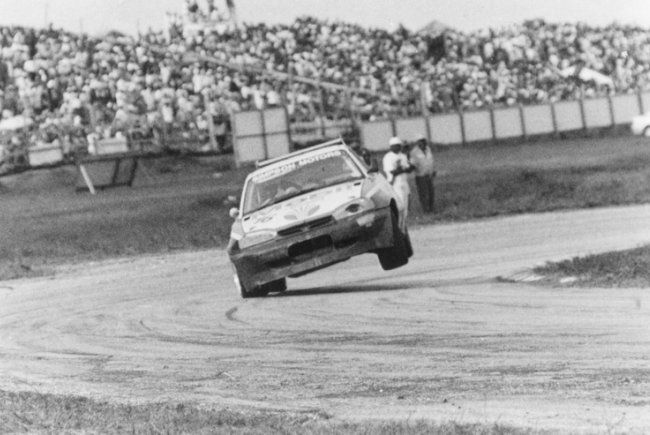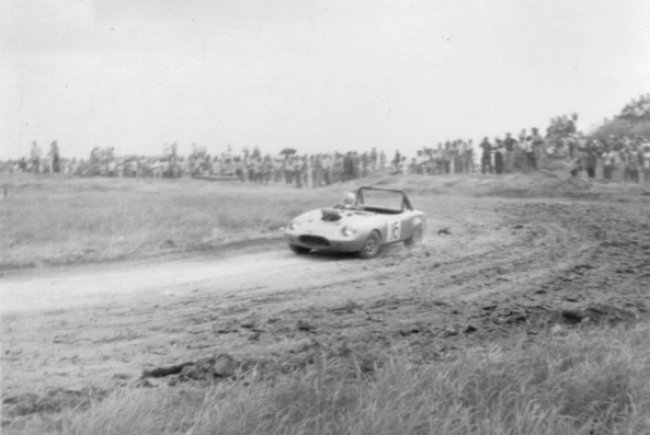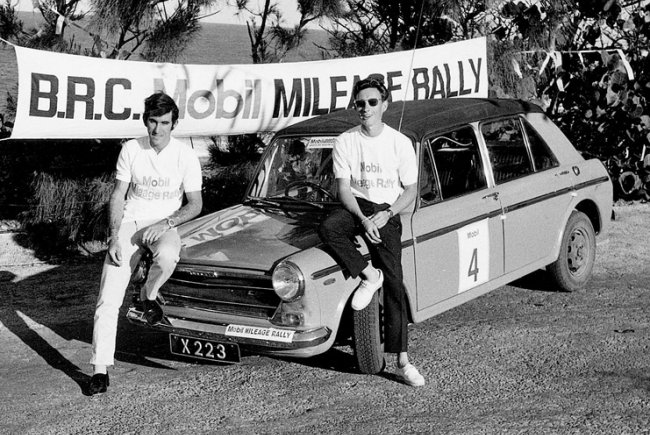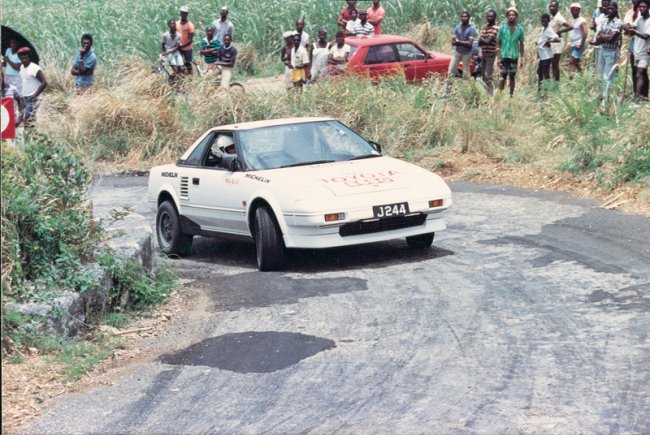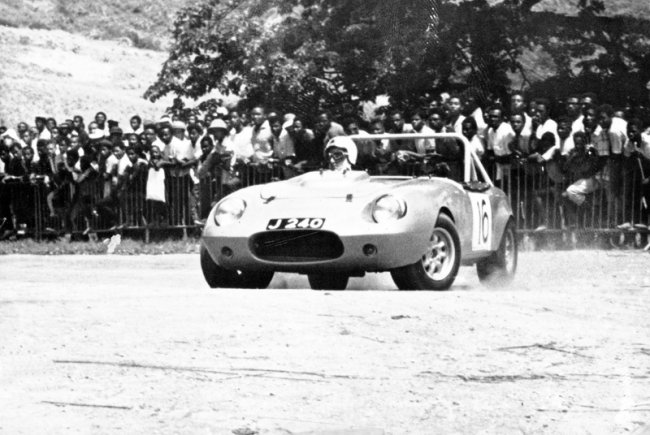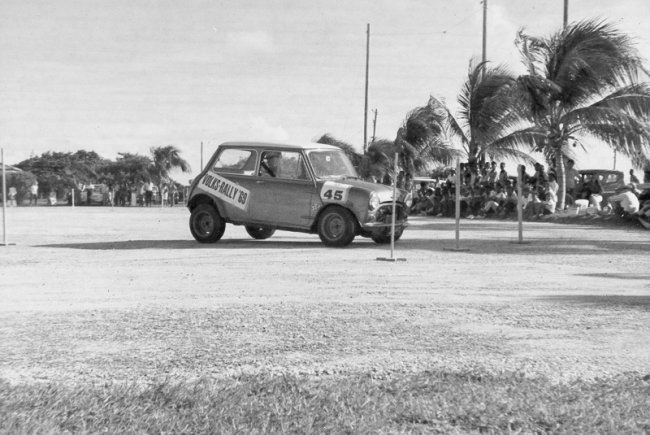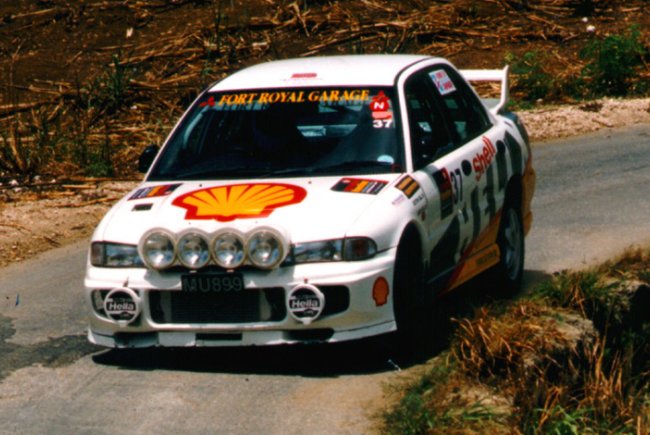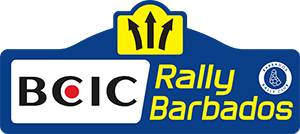
Michael Gill
Michael Gill
A winner in every discipline, multiple champion Michael Gill is unique in having competed in every decade of the Club’s existence, a signal achievement
Respected for his skill and control in any car he drove, Michael ‘Samurai’ Gill enjoyed a remarkable career in island motor sport, competing for at least a part of every decade in the Barbados Rally Club’s history. A multiple champion, a winner in all the disciplines – autocross, dexterity test, hill sprint, race and rally – he was voted Driver of the Century in December 1999.
Even before Michael started to compete in the mid-’60s, the name Gill was well-known in island motor sport; parents Dorien and Agnes had already been class-winners on a number of Mobil Mileage Rallies, while elder brother Bobby was a prominent competitor and the first driver from Barbados to race abroad.
Gill first displayed his talents racing karts, where the regular opposition at Lowthers included the likes of arch-rival Bizzy Williams, Don Hunte and his sister Wendy – later to marry Bizzy – and Alice Ward. As soon as licence requirements allowed him, however, Gill switched to cars; among his early results was 17th in the 1967 Lucas Night Rally, navigated in an NSU Prinz by Christopher Worme, but his real forte in the late 1960s was the dexterity test – he was a regular winner, against opposition including David Barnard, Mack King and Roger Manning.
In the combined events, which were popular at the time, a strong performance in the dexterity element would often propel him to a strong overall finish; in the 1969 VolksRally, for instance, victory in the dexterity tests weighed with 14th place in the rally (navigated by Don Hunte) to result in fifth overall.
And then there were the Goodyear Motor Sport Meetings, which usually combined an autocross at Yorkshire with dexterity tests at the Royal Police Training School at Paragon. Gill was the overall winner of the third and fourth of these, in 1970 against a record entry of 73 cars.
He also tackled the Mobil Mileage Rally in its final years, finishing 15th and third in class in 1969 (with Don Hunte in a Vauxhall Viva), then sixth and class winner the following year (with Rosie Allan in a Hillman Hunter). Hill sprints offered Gill another arena in which to excel in the early 1970s; at the wheel of the Minilan, a lightweight open-topped sports car with a 1293cc Mini engine, he was a consistent winner, with class and overall records at Stewarts Hill and Turners Hall.
But his finest hour to date came at Bushy Park; driving the Minilan, he set the pace at the opening race meet on Independence Day 1971: the only driver to win all three races in his Group, he was the circuit’s first Champion Driver and its first outright lap record-holder. And it was there that Gill’s other talent would be best displayed, as designer and constructor of some remarkable racing machines. In 1972, there was the spaceframe Fort Royal Special, Mini-based, with components including the front suspension from Irishman Alec Poole’s Mini, which had competed at Turners Hall the previous November. This proved completely reliable until the Players No 6 International in November, where it non-started . . . Gill was also racing a Datsun 1200 that day, however, in which he won all three races in the Group to end the season Bushy Park Champion.
By the start of the 1973 season, Gill had a BDA-engined Brabham BT35, in which he attracted the attention of one of Britain’s weekly motor sport publications, Motoring News, visiting the island to report on the Barclays International Race Meeting in March. He won seven of the 17 car races, claiming a Group hat-trick in the Datsun (beating a number of larger-engined cars) and the Brabham, then used the latter to win the end-of-day Handicap. At the time, it was suggested that he might compete in some rounds of the European Formula 2 Championship, but this did not come to pass.
Instead, parts of the Brabham and its engine disappeared beneath the bodywork of a Hillman Imp, another fine example of Gill’s ingenuity. A note in the November 1973 Banks International Race Meeting programme said of Gill:
“Mike must also be considered as Barbados’ leading constructor of racing machinery. We shall see him today in his latest creation, a Group 4 car with all the speed and handling of his well-known Brabham BT35.”
Gill continued his winning ways, three each in Datsun and Imp; sadly, the Imp did not last beyond the April start to the next season – as reported in the Barbados Advocate: “The Mobil Imp, perhaps the fastest car seen during the meeting, ran off the track on the straight after overtaking two Terrapins in a Formula Caribbean event and was extensively damaged.” Although Gill was entered in two other cars, including the ex-Alec Poole 4.5-litre Rover, he withdrew from the rest of the meeting, and did not return until March 1975.
By now, he had acquired the Brabham BT21 raced by Britain’s Bob Howlings at the previous November’s International; Gill won all three Formula Caribbean races but, in doing so, inspired such a strong challenge from Bizzy Williams (Brabham BT28), that Williams deprived Gill of the outright lap record for good. Even so, throughout the history of 1970s Bushy Park, there was never a time at which Gill did not hold at least one lap record; sometimes, it was as many as three, in Groups with the Datsun and Imp, also outright with the Brabham.
Gill was one of many who withdrew from motor sport when Bushy Park closed; on his return in 1984, he was soon back on top of his game, despite the arrival of new challengers such as Roger Skeete. By the end of the decade, he’d been Rally Champion three times, thanks to a string of consistent performances with co-drivers Garry Clarke and Peter Weekes, Champion Driver twice, and shared the Speed Event title once with Skeete. During this period, his mounts varied from a Toyota MR2 to a rapid Suzuki Forsa Gti in which he tackled speed events in the early 1990s.
In the early days of the Texaco All-Stage Rally, the battle between Gill and Skeete continued, although Gill never got the upper hand – while he won the June Rally in 1990 (in a Toyota Starlet with navigator Stewart Gill), he never won the Texaco, although he came close, second to Skeete in the first three years.
Bushy Park had reopened in 1992, with Gill back in winner’s row in an Opel Kadett, which morphed the next season into a Daewoo Racer; although there were many highs, there were also some lows, the Barbados Advocate describing the Mobil 1 International Race Meet in May 1993 as “one of the most wretched in the career of top local driver Mike Gill. His Daewoo Racer was involved in a collision with the Mazda RX7 of Ray Rahaman, which ended their participation in the meet.”
With Bushy Park’s revival lasting just three years, it was back to rallying, in a Mitsubishi Lancer Evo III. There was more success, although brake failure on the 1996 Texaco probably cost Gill the title that year; he finished second to Skeete – for the fourth time – on the Texaco in 1997, a year during which he also competed abroad, winning the Shell Speed Event in the nearby island of St Vincent.
As the Millennium closed, Gill crowned his career with two major titles in 1999, his third Club Championship and Driver of the Century. VoB was seeking “the driver who created the greatest impact on the sport when he came on the scene”, Gill voted Driver of the Century ahead of Roger Skeete, Bizzy Williams, Paul Bourne and Anthony Young.
Although no longer an active competitor, Gill is still closely involved in motor sport as President of the Barbados Karting Association and one of its representatives on the Barbados Motoring Federation.

